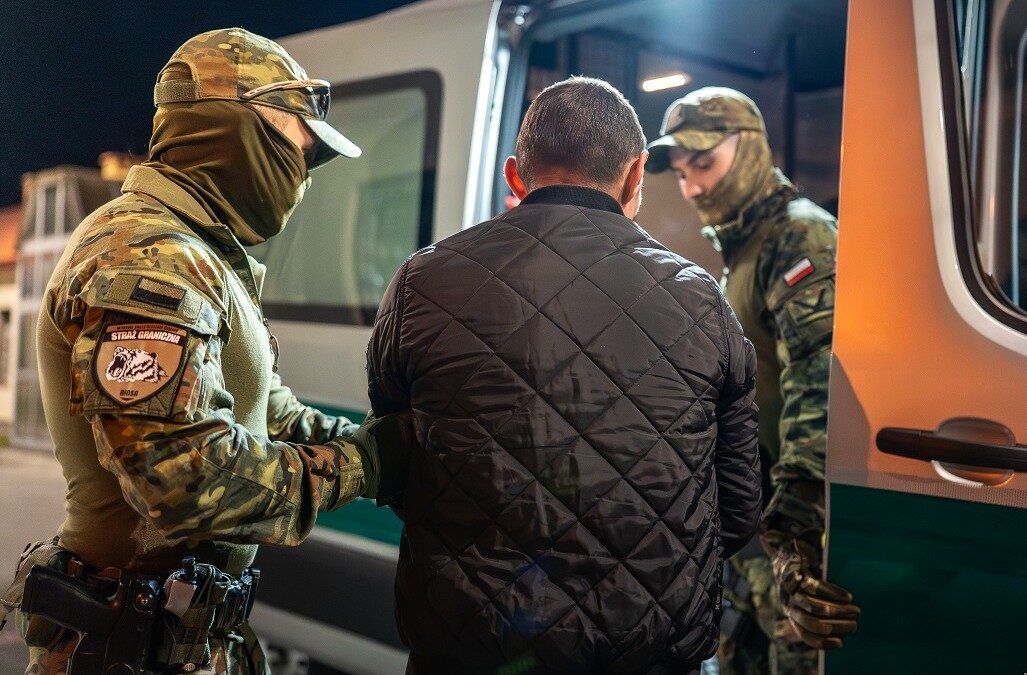The coronavirus situation in Poland has now “stabilised” and “we can smile a little that the worst is behind us”, says the health minister, Adam Niedzielski.
“For the first time in two weeks, the number of [new] daily cases has fallen below 20,000, and this is certainly an optimistic sign,” said Niedzielski yesterday, quoted by Dziennik Gazeta Prawna.
Some have noted that the decline in infections has come alongside an even greater drop in testing numbers – which were already among the lowest in the European Union – as well as a rise in the percentage of tests coming back positive, where Poland ranks first in the EU.
But experts have told the media that it does appear infections have now stabilised, thanks to the tougher restrictions the government introduced last month.
On 7 November, Poland recorded its highest ever daily number of new cases, 27,875. That followed a month of exponential growth, which had led Niedzielski to admit that the government “does not have everything under control”.
Yet since then, daily case numbers have fallen, dropping just below 20,000 yesterday and remaining there today. Niedzielski attributed the decline to the government’s decision to introduce tougher restrictions, which have included closing schools and many shops.
“We can congratulate each other,” said the health minister. “The level of social responsibility has definitely improved.”
The government had previously warned that the hundreds of thousands of people attending protests against a near-total abortion ban would cause a spike in infections, putting public health at risk.
Niedzielski said three weeks ago that the demonstrations – which are the largest in Poland’s post-communist history – “will have consequences when it comes to the pandemic”. In fact, the government’s figures show a subsequent decline in infections.
Some, however, are questioning whether those figures show the true extent of the epidemic situation in Poland.
While the seven-day average of daily new cases is currently around 10% below its peak, the average number of daily tests has fallen over 20%. Yesterday’s number of tests, 35,100, was the lowest in over a month.
Meanwhile, the percentage of tests that are positive has continued to rise. It now averages close to 50% – the highest rate in the EU and the second highest in the world, according to figures from Our World in Data, a service run by researchers at the University of Oxford.
The coronavirus death rate has also continued to rise. Today’s daily death figure, 603, was the highest since the start of the pandemic.
Poland's share of coronavirus tests that are positive (47%) is currently the second highest in the world, behind only Mexico (53%) pic.twitter.com/XeefVcbhB2
— Daniel Tilles (@danieltilles1) November 17, 2020
Michał Rogalski – the creator of a Polish Covid database that is used, among others, by scientists who create epidemiological models for the government – rejects the idea that the situation has stabilised.
“The share of positive tests is growing all the time – these is no stabilisation there,” Rogalski told TVN24. “In my opinion this is one of the most important indicators of the epidemic. Not only does it show that we test too little; it also shows that more and more people are escaping the testing system.”
Niedzielski, however, rejects such criticism, arguing that “the decreasing number of tests is a signal that the situation is improving”, reports Onet. It means that fewer doctors are requesting that tests be conducted, he says.
Rogalski has also noted a discrepancy between the government’s data and those reported by local health authorities. In the case of Mazovia, the province in which Warsaw is located, there were over 14,000 coronavirus cases missing from the national figures at the start of this week.
Niedzielski today announced that the government has been aware of the issue since last week and is trying to find “an immediate way to resolve it”. He explained that coronavirus infections among staff at sanitary centres have delayed the reporting of some data.
Franciszek Rakowski, a researcher from the Centre for Mathematical and Computational Modelling at the University of Warsaw, broadly supports the health minister’s position.
Data show that stabilisation has taken place, but not in a “natural” way, says Rakowski. Instead, it has been the result of new restrictions. “If we gave up on them, we would have a return to the dynamic increase in the number of confirmed cases,” he told TVN24.
The decline in testing is not due to the government trying to influence the numbers, as some have suggested, says Rakowski. It may have happened because “doctors are overloaded” or because “people, having got used to the disease a little, prefer not to call a doctor and [stay] at home without a test”.
Włodzimierz Gut, a professor of virology, agrees that testing numbers “cannot be controlled” by the authorities, and can only have declined because of fewer request from doctors. He told the Polish Press Agency (PAP) that “the epidemic is not growing at this point, thanks to the restrictions introduced in October”.
Main image credit: Adam Guz/KPRM (under CC BY-NC-ND 2.0)

Daniel Tilles is editor-in-chief of Notes from Poland. He has written on Polish affairs for a wide range of publications, including Foreign Policy, POLITICO Europe, EUobserver and Dziennik Gazeta Prawna.




















